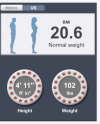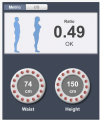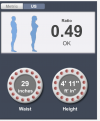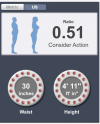Ok so I have posted on here a few times as I was diagnosed with prediabetes 42. I had posted that I was slim and had no weight to lose and I had already lost weight even more since going low carb and on 3 meals a day. So it seems though I’m thin outside fat inside. I’m really shocked and don’t know what to do to be honest as my doctor is not much help. I weigh around 7 stone 5 pounds and I’m 4ft 11 and that’s a lower end of normal weight. I’ve never been one to exercise and when I lost weight before I was diagnosed I think I lost a lot of muscle! And I tried one of those online calculators of waist to hip ratio and it makes me obese! And the worse thing is I tried one of those scales in boots that shows your body fat and it put me at 45% fat! Obese! I really just want to give up! I can’t afford a personal trainer so how on the earth can I build muscle as I read that people with high body fat have very low muscle mass I’m really scared that there’s nothing I can do to rectify this! I can’t seem to get my waist size down!! I’m 34 inch hips and 29.5 waist which puts me at obese I really don’t understand and I don’t have the energy to exercise to build muscle so what should I do? Please help!
Thin outside fat inside
- Thread starter gowest12
- Start Date
You are using an out of date browser. It may not display this or other websites correctly.
You should upgrade or use an alternative browser.
You should upgrade or use an alternative browser.
- Messages
- 21,884
- Type of diabetes
- Type 2
- Treatment type
- Diet only
Hi,
Unfortunately, there is a lot of misinformation about how a simple number on a scale (the lower the better) automatically makes a person healthy. The BMI calculation has a lot to answer for!
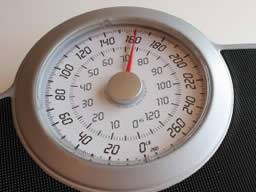
 www.medicalnewstoday.com
www.medicalnewstoday.com
High intensity interval training (have a google for HIIT https://en.wikipedia.org/wiki/High-intensity_interval_training ) is very good at building muscle mass.
With the proviso that you need to be eating a good nutritious diet to give you the building blocks for muscle.
There is quite a lot of disagreement https://perfectketo.com/keto-bodybuilding/ about whether you need to eat carbs in order to build muscle, but there is a significant amount of growing evidence that you can build muscle without carb cycling, or whatever other body building regimes are currently trendy.
Unfortunately, there is a lot of misinformation about how a simple number on a scale (the lower the better) automatically makes a person healthy. The BMI calculation has a lot to answer for!

Why BMI is inaccurate and misleading
Body Mass Index (BMI) is not a very accurate measurement for determining whether somebody is of normal weight, overweight or obese, researchers say.
High intensity interval training (have a google for HIIT https://en.wikipedia.org/wiki/High-intensity_interval_training ) is very good at building muscle mass.
With the proviso that you need to be eating a good nutritious diet to give you the building blocks for muscle.
There is quite a lot of disagreement https://perfectketo.com/keto-bodybuilding/ about whether you need to eat carbs in order to build muscle, but there is a significant amount of growing evidence that you can build muscle without carb cycling, or whatever other body building regimes are currently trendy.
The inaccuracy of BMI is one of my bandwagons. People who have read what I have said about it in the past may skip this post!
We have a variety of different body shapes in humans (and indeed in animals) and carry our weight in different areas as a matter of genetics. Some of us have waists that are bigger than BMI says is desirable, but also have narrow hips and shoulders, while others have tiny waists and carry their weight across their haunches, others have small waists but broad shoulders and hips, older males in particular may have a bolster of stored fat across the back of their shoulders while retaining a slim waist, and so on. Our genetically inherited body shape cannot be changed. It/we can weigh more or less, but the shape stays constant. Add to this the current mantra that abdominal weight is baaaad, and compare that idea (because that's what it is - an idea) with wild animals that eat natural food and run about a lot, and guess what - when they put weight on, it first arrives along the organs. Anyone who had prepared wild animals for the table sees this. (there is an exception for Sika deer that also carry subcutaneous fat. I can't speak for animals outside the UK). Therefore I suspect that such fat is protective, and actually not a Bad Thing at all. Maybe one day science will catch up with that concept.
So - how much note do we take of the theory of BMI?
We have a variety of different body shapes in humans (and indeed in animals) and carry our weight in different areas as a matter of genetics. Some of us have waists that are bigger than BMI says is desirable, but also have narrow hips and shoulders, while others have tiny waists and carry their weight across their haunches, others have small waists but broad shoulders and hips, older males in particular may have a bolster of stored fat across the back of their shoulders while retaining a slim waist, and so on. Our genetically inherited body shape cannot be changed. It/we can weigh more or less, but the shape stays constant. Add to this the current mantra that abdominal weight is baaaad, and compare that idea (because that's what it is - an idea) with wild animals that eat natural food and run about a lot, and guess what - when they put weight on, it first arrives along the organs. Anyone who had prepared wild animals for the table sees this. (there is an exception for Sika deer that also carry subcutaneous fat. I can't speak for animals outside the UK). Therefore I suspect that such fat is protective, and actually not a Bad Thing at all. Maybe one day science will catch up with that concept.
So - how much note do we take of the theory of BMI?
AloeSvea
Well-Known Member
- Messages
- 2,275
- Type of diabetes
- Type 2
- Treatment type
- Other
Hi @gowest12. I like the whole analysis of bodies thing, so I got intrigued by your prediabetes as a TOFI dilemma.
I also got confused by your talking about your body fat being of an obese person, as a thin person, so I got your vitals and put them into my favourite waist height ratio graphic, ditto your BMI, at health-calc. (It involved a bit of note-taking, having to convert the stones thing, and the feet thing - so I hope I got it right. I took a couple of readings, as stones and feet don't convert neatly into the metric or the US system. Very happy to be corrected if I did the conversions wrong.) I've done a range on the waist/height ratio to give you an indicator how close to 'the line' we can be with a waist height ratio of .49 (and I have been there plenty of times.).
First the disclaimer - I totally get that BMIs are notoriously bad health calcaulations. I only track mine because my local medical centre goes whole hog on BMIs, so I have to really, to discuss it with them. (I would hazard a guess that most of our docs, nurses, and med centres take great notice of BMIs - I have been begging my medical professionals to take notice of the way more reliable waist height ratio for years, to no avail.) BMIs are also quite handy in here, to discuss weight stuff easily, which is why the meds like it so much too.
Also, on these graphics, it depicts a certain kind of male and female physique. My silhouette is nothing like the health-calc one, but it is quite handy for making visual the body fat thing. I did this for another person in this forum, and she found it quite helpful, so I thought I would do it for you too.
What I see is a fairly classic fat storage pathway of folks who get blood glucose dysregulation - that is - on the belly. When you, ie someone with this fat storage pathway, stores excess energy from food, it will go mainly to your waist and hips region. And the idea is, that is where our key organs are for food digestion and regulation and so on. So sick fat cells on/in the liver and pancreas in particular is associated with blood glucose regulation problems, and of course, insulin resistance.
This is very common for folks with prediabetes and diabetes. It is absolutley my own body fat pattern for sure.
You say you can't afford to lose weight (I would say - belly fat, not weight per se). But in fact your BMI is not borderline 'too thin'. Which would be 18-18.5. And what I say too is - you can tell when oneself or others are dangerously thin. Starving people, or beginning to starve people have a very distinct look. Your loved ones will tell you if you are looking starved! I would say. Or - your mirror will. And your energy level. Starved folks don't get up and go much.
If you are starting to get some blood glucose dysregulation, being in the low-end prediabetes range, your body is telling you you can afford to lose some belly fat, and yeah - cutting down on the carbs is the way to do it.
You are lucky @gowest12, even though I understand you don't feel that way. Lowering carb intake to get rid of some excess belly fat (which should, theoretically, bring your HBA1c down with the departing belly fat), is pretty straight forward in the diabetes scheme of things. If you do that, and be a slender person, you theoretically should never get diabetes.
My family is full of people in that bmi 20 ish range, so I don't see that as 'too thin' - in fact it's probably the old norm for our species, when eating from nature, as it were.
So - in a nutshell - you are probably not 'too thin', you probably have belly fat to spare, so it's a 'no worries' verdict, from this wee delve into your body type from your vitals at least.
I hope this has been reassuring?
I also got confused by your talking about your body fat being of an obese person, as a thin person, so I got your vitals and put them into my favourite waist height ratio graphic, ditto your BMI, at health-calc. (It involved a bit of note-taking, having to convert the stones thing, and the feet thing - so I hope I got it right. I took a couple of readings, as stones and feet don't convert neatly into the metric or the US system. Very happy to be corrected if I did the conversions wrong.) I've done a range on the waist/height ratio to give you an indicator how close to 'the line' we can be with a waist height ratio of .49 (and I have been there plenty of times.).
First the disclaimer - I totally get that BMIs are notoriously bad health calcaulations. I only track mine because my local medical centre goes whole hog on BMIs, so I have to really, to discuss it with them. (I would hazard a guess that most of our docs, nurses, and med centres take great notice of BMIs - I have been begging my medical professionals to take notice of the way more reliable waist height ratio for years, to no avail.) BMIs are also quite handy in here, to discuss weight stuff easily, which is why the meds like it so much too.
Also, on these graphics, it depicts a certain kind of male and female physique. My silhouette is nothing like the health-calc one, but it is quite handy for making visual the body fat thing. I did this for another person in this forum, and she found it quite helpful, so I thought I would do it for you too.
What I see is a fairly classic fat storage pathway of folks who get blood glucose dysregulation - that is - on the belly. When you, ie someone with this fat storage pathway, stores excess energy from food, it will go mainly to your waist and hips region. And the idea is, that is where our key organs are for food digestion and regulation and so on. So sick fat cells on/in the liver and pancreas in particular is associated with blood glucose regulation problems, and of course, insulin resistance.
This is very common for folks with prediabetes and diabetes. It is absolutley my own body fat pattern for sure.
You say you can't afford to lose weight (I would say - belly fat, not weight per se). But in fact your BMI is not borderline 'too thin'. Which would be 18-18.5. And what I say too is - you can tell when oneself or others are dangerously thin. Starving people, or beginning to starve people have a very distinct look. Your loved ones will tell you if you are looking starved! I would say. Or - your mirror will. And your energy level. Starved folks don't get up and go much.
If you are starting to get some blood glucose dysregulation, being in the low-end prediabetes range, your body is telling you you can afford to lose some belly fat, and yeah - cutting down on the carbs is the way to do it.
You are lucky @gowest12, even though I understand you don't feel that way. Lowering carb intake to get rid of some excess belly fat (which should, theoretically, bring your HBA1c down with the departing belly fat), is pretty straight forward in the diabetes scheme of things. If you do that, and be a slender person, you theoretically should never get diabetes.
My family is full of people in that bmi 20 ish range, so I don't see that as 'too thin' - in fact it's probably the old norm for our species, when eating from nature, as it were.
So - in a nutshell - you are probably not 'too thin', you probably have belly fat to spare, so it's a 'no worries' verdict, from this wee delve into your body type from your vitals at least.
I hope this has been reassuring?
Attachments
Thank you for this. But how do I gain muscle as I feel I lost a lot of muscle and when I do lose fat the belly is very stubborn. I want to drop the belly fat but gain muscle?? But I feel so tired to exercise and it’s got to be consistent doesn’t it???Hi @gowest12. I like the whole analysis of bodies thing, so I got intrigued by your prediabetes as a TOFI dilemma.
I also got confused by your talking about your body fat being of an obese person, as a thin person, so I got your vitals and put them into my favourite waist height ratio graphic, ditto your BMI, at health-calc. (It involved a bit of note-taking, having to convert the stones thing, and the feet thing - so I hope I got it right. I took a couple of readings, as stones and feet don't convert neatly into the metric or the US system. Very happy to be corrected if I did the conversions wrong.) I've done a range on the waist/height ratio to give you an indicator how close to 'the line' we can be with a waist height ratio of .49 (and I have been there plenty of times.).
First the disclaimer - I totally get that BMIs are notoriously bad health calcaulations. I only track mine because my local medical centre goes whole hog on BMIs, so I have to really, to discuss it with them. (I would hazard a guess that most of our docs, nurses, and med centres take great notice of BMIs - I have been begging my medical professionals to take notice of the way more reliable waist height ratio for years, to no avail.) BMIs are also quite handy in here, to discuss weight stuff easily, which is why the meds like it so much too.
Also, on these graphics, it depicts a certain kind of male and female physique. My silhouette is nothing like the health-calc one, but it is quite handy for making visual the body fat thing. I did this for another person in this forum, and she found it quite helpful, so I thought I would do it for you too.
What I see is a fairly classic fat storage pathway of folks who get blood glucose dysregulation - that is - on the belly. When you, ie someone with this fat storage pathway, stores excess energy from food, it will go mainly to your waist and hips region. And the idea is, that is where our key organs are for food digestion and regulation and so on. So sick fat cells on/in the liver and pancreas in particular is associated with blood glucose regulation problems, and of course, insulin resistance.
This is very common for folks with prediabetes and diabetes. It is absolutley my own body fat pattern for sure.
You say you can't afford to lose weight (I would say - belly fat, not weight per se). But in fact your BMI is not borderline 'too thin'. Which would be 18-18.5. And what I say too is - you can tell when oneself or others are dangerously thin. Starving people, or beginning to starve people have a very distinct look. Your loved ones will tell you if you are looking starved! I would say. Or - your mirror will. And your energy level. Starved folks don't get up and go much.
If you are starting to get some blood glucose dysregulation, being in the low-end prediabetes range, your body is telling you you can afford to lose some belly fat, and yeah - cutting down on the carbs is the way to do it.
You are lucky @gowest12, even though I understand you don't feel that way. Lowering carb intake to get rid of some excess belly fat (which should, theoretically, bring your HBA1c down with the departing belly fat), is pretty straight forward in the diabetes scheme of things. If you do that, and be a slender person, you theoretically should never get diabetes.
My family is full of people in that bmi 20 ish range, so I don't see that as 'too thin' - in fact it's probably the old norm for our species, when eating from nature, as it were.
So - in a nutshell - you are probably not 'too thin', you probably have belly fat to spare, so it's a 'no worries' verdict, from this wee delve into your body type from your vitals at least.
I hope this has been reassuring?
Ushthetaff
Well-Known Member
- Messages
- 1,082
- Type of diabetes
- Type 1
- Treatment type
- Insulin
- Dislikes
- Mountain out of mole hill makers ,queues , crowds , shopping on a Saturday hmm just shopping I guess no matter what day it is
Don’t get me started about BMI I’ve been obese all my adult life according to my BMI , I would change the B in body mass index to something else ( wonder if you can guess what) I played rugby from the age of 8 so by the time I reached my 20s I was quite muscular and to be honest I’m now 60 and still quite muscular and definitely not overweight, think my problem isn’t I’m too heavy but not tall enough , BMI is ok if it’s not the only thing people look in , it has to be a collection of things , i Went to the doctors once got on scales height blah blah blah doc looked at chart said “oh you’re bordering on obese “ she hardly looked at me and she filled the chair she was sitting on and some , yes BMI can be an indicator but not the only indicator ,
AloeSvea
Well-Known Member
- Messages
- 2,275
- Type of diabetes
- Type 2
- Treatment type
- Other
Thank you for this. But how do I gain muscle as I feel I lost a lot of muscle and when I do lose fat the belly is very stubborn. I want to drop the belly fat but gain muscle?? But I feel so tired to exercise and it’s got to be consistent doesn’t it???
The only way that i know of to gain muscle is to use them! So being really tired is a problem for sure. I find fueling up super important to do physical exercise - and for me that's protein and fat in a nice bundle from mother nature in the form of meat and seafood, and less nature more humanly processed - dairy products. Check and see if you are low on B12? Or any other nutrient? Start drinking green juices? Taking supplements?
Everybody seems to be metabolicaly individual, with some overiding human/mammal things - and for us that's the superfluous nature of carbs from food for muscle building and for the diabetic-friendly fat-burning energy system instead of glucose-burning.
Which brings me to - low-carbing for getting rid of belly fat.
Also, finding out if you are intolerant to wheat products, and has been causing you to have belly bloat, and excess carbs in fat storage around your belly. How to find out? Eliminate it from your diet for a month or two. Also - dairy products. By the same method. Many people have found, by eliminating these two biggies, that they have been intolerant to these things when they take it out of their diet. (Read 'Wheat Belly' by Dr William Davis...). Re Dairy - most of the world is intolerant to it as an adult, probably we are all somewhat intolerant, just some way more than others. Belly bloat due to food intolerances is a very real thing. I was stunned how dramatic this was when I eliminated wheat from my diet a few months after diagnosis. For me it was a no-brainer. I do knowingly eat some a couple of times a year for a treat (one of those days is coming up in five days time!), and watching my belly swell, and then go back down again can be, ah, fun?!
Rather than muscle gain you might want to try elimination diets first? Because if you are eating foods that you are intolerant to, they may also be contributing to your fatigue... Or do both! Simultaneously. What do you think?



